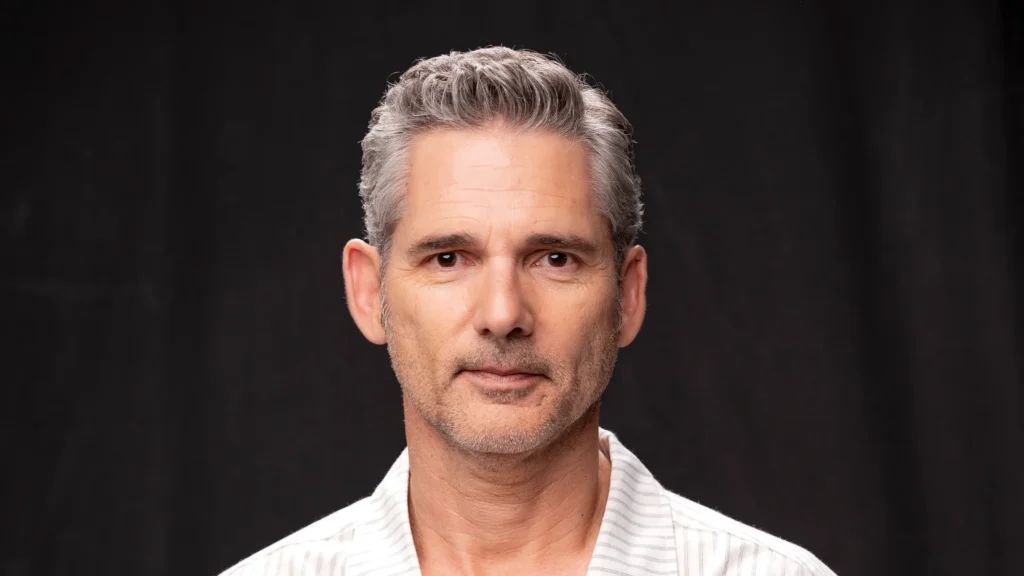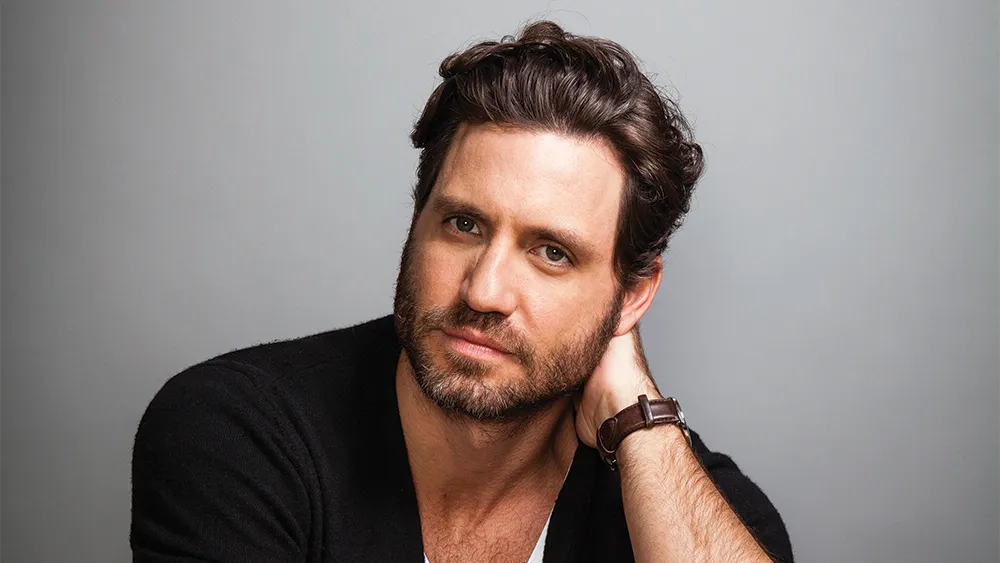The Deliver Us From Evil film is another entry in Hollywood’s long tradition of horror movies marketed with the ominous promise, “based on a true story.” At its peak, this label effectively blurs the boundaries between reality and fiction, prompting viewers to contemplate the possibility of the nightmare affecting their own lives. At its worst, it’s a marketing shortcut that leans on recycled exorcism horror clichés. Directed by Scott Derrickson—the filmmaker behind Sinister and The Exorcism of Emily Rose—this 2014 possession thriller walks a precarious line between authentic chills and familiar storytelling.
This review delves deeper beyond the superficial scares. Instead of simply echoing the film’s jump shocks or grotesque Latin graffiti, we’ll examine the choices Derrickson makes, the real-life story of Ralph Sarchie, and whether the dramatization adds depth or cheapens the material. Think of this less as a sermon and more as a dissection: an exploration of how far the Deliver Us From Evil film goes in balancing gritty NYPD cop drama with the supernatural weight of demonic possession.
Watch the official trailer above. See if you can spot the borrowed tropes from The Exorcist and Se7en before we tear into them.
Why The “True Story” Behind Deliver Us From Evil is Its Most Fascinating Monster
Deliver Us From Evil, like any horror movie rooted in a true story, contains a nugget of truth. The film is “inspired by” the accounts of real-life NYPD Sergeant Ralph Sarchie. Not just a cop, Sarchie claimed to have a “supernatural radar”—a sixth sense for evil he called his “green light.” After years of encountering bizarre and violent cases in the South Bronx, he eventually retired from the force and became a demonologist, co-authoring the book Beware the Night.
The real Sarchie’s stories are captivating in their own right, with claims of encountering a demonic possession in a housing project, a woman speaking in tongues, and a profound sense of a dark, oppressive force. The movie takes this skeleton and grafts on a Hollywood horror musculature. The historical context is there, but Derrickson and co-writer Paul Harris Boardman aren’t documentarians; they’re entertainers. They take Sarchie’s anecdotes and amplify them into a cinematic, Catholic exorcism ritual-filled spectacle, connecting disparate events with a single, sinister villain. The real events are the seed, but what grows from it is a thoroughly engineered and often derivative haunted cop narrative.
How the CastRead More
 of Deliver Us From Evil Fights a Flawed Script
of Deliver Us From Evil Fights a Flawed Script


A film can create a spooky atmosphere, but without a compelling cast to guide us through the darkness, it’s merely a haunted house without heart. The Deliver Us From Evil film assembles a surprisingly strong ensemble, but the question is, do they have the material to work with?
What Eric Bana Brings to the Role of the Haunted Cop

The casting of Eric Bana as the haunted cop Ralph Sarchie was a solid choice. Bana possesses the physical presence and everyday grit necessary to effectively portray a weary NYPD sergeant. He portrays Sarchie’s descent from skeptic to believer with a gruff, grounded physicality.
You feel the weight of the supernatural radar on his shoulders; it’s a burden that manifests in the bags under his eyes and the slump of his posture. However, the script often fails him, reducing his internal conflict to stock posturing and gruff one-liners. Bana takes on a significant role, striving to infuse humanity into a character frequently portrayed by the screenplay as an action hero first and a troubled man second.
How Édgar Ramírez Steals the Show as a Rebel Priest

If there’s one performance that truly elevates the material, it’s Édgar Ramírez as Jesuit priest Father Mendoza. Ramirez brings a world-weary, almost rock-star swagger to the role. He’s not your typical saintly priest; he’s a hard-drinking, chain-smoking “specialist” who sees demonic fighting as a dirty, unglamorous job.
His eyes hold a history of spiritual warfare that the film only hints at. The chemistry between Bana’s stoic skepticism and Ramirez’s pragmatic faith provides the movie with its few genuinely compelling moments. Ramirez doesn’t just play a priest; he plays a man burdened by his gift, and it’s a captivating, layered performance that the film frankly doesn’t deserve.
Where Joel McHale Fits as the Wise-Cracking Partner

Joel McHale, portraying Sarchie’s partner Butler, contributes comic relief with his signature sardonic wit. It’s a functional performance, but it often feels tonally jarring. While McHale delivers the lines written for him, the character mostly serves to crack jokes about the absurdity of their situation, undermining the very tension the film is trying to build. He’s the audience surrogate saying, “This is crazy,” but in a film that takes its own demon-possessed mythology so seriously, his presence often feels like it’s from a different, lighter movie.
Why Olivia Munn is Wasted in a One-Note Role

Let’s not mince words: Olivia Munn is given a raw deal as Jen, Sarchie’s wife. Her character exists in a state of perpetual concern, serving as the archetypal “worried wife at home.” Her most significant line—”you’re never here, not even when you’re home”—perfectly encapsulates her purpose: to nag and to humanize Sarchie, but never to exist as a fully realized person herself.
Munn does what she can with the part, conveying a genuine sense of fear and loneliness, but the role is a textbook example of the horror film misogyny the movie is critiqued for. She is a plot device, not a person.
What Makes Sean Harris a Truly Unforgettable Villain
And then there’s Sean Harris. As the primary antagonist, the mysterious Marine-turned-vessel named Santino, Harris delivers a performance of such unnerving, Peter Lorre-esque intensity that he single-handedly generates most of the film’s genuine dread. He contorts his body, hisses his lines with unholy comic vigor, and moves with a predator’s grace.
Harris’s physical commitment to the role exemplifies a masterclass in creating menace, without the need for CGI or loud sound design. He is the embodiment of the film’s central evil, and every second he’s on screen is electrifying, highlighting just how bland the rest of the film’s horror can be in comparison.
What Makes a Possession Scene Truly Terrifying? This Film Doesn’t Seem to be known.
The climax of any exorcism movie is, of course, the exorcism itself. A director has the opportunity to either establish their film as a masterpiece in the horror genre or expose its fragile foundation. Sadly, Deliver Us From Evil falls into the latter category.
How does the film handle its pivotal exorcism scenes? The film employs a strategy of throwing everything at the wall and hoping for something to stick. We encounter the obligatory Latin chanting, the violent convulsions, and the deep, distorted voices. It’s a collection of tropes stolen from The Exorcist, but without the theological weight or raw cinematic power. The film is so concerned with being a sympathetic representation of Sarchie’s paranoia that it forgets to make the demon itself a credible threat. The entity’s motives are vague, its powers inconsistent, and its defeat feels more like a victory of brute force than spiritual fortitude.
Even the much-touted possessed toy owl, which should be a source of uncanny dread, becomes a benignly cooing joke. The film’s mindlessly excessive approach to horror means that by the time we arrive to the big finale, we’re already desensitized to the noise and chaos. It’s hysterically incompetent in its inability to build a sustained atmosphere of terror, opting instead for a series of jarring, disconnected frights.
Behind the Scenes: How Scott Derrickson’s Vision Clashed with Hollywood Conventions
Scott Derrickson has extensive experience in the horror genre. With The Exorcism of Emily Rose and Sinister under his belt, he understands the mechanics of a scare. His intention with the Deliver Us From Evil film was to make a “hard R” supernatural cop movie, a hybrid genre picture that blended the grit of a police procedural with the supernatural elements of a demonic possession tale.
The behind-the-scenes struggle, however, seems to be one of tone and focus. Derrickson has expressed his desire to delve into themes of spiritual doubt and penance, portraying a man grappling with a world beyond his badge and gun. Nevertheless, the final product is often at odds with this ambition.
The studio’s desire for mainstream appeal likely pushed the film toward more conventional and, frankly, tacky horror tropes. The fetishistic focus on grisly junk feels like a concession, a way to guarantee a certain number of jump scares for the trailer. The result is a film with a fractured identity: too serious to be a fun B-movie, but too silly and derivative to be the profound horror experience it clearly wants to be.
How Fans and Critics Reacted: The Verdict on This Haunted Cop Tale
The Deliver Us From Evil film received mixed reactions from fans and critics. While the film wasn’t a total box-office bomb, it was largely met with a shrug by critics who saw it for what it was: a competently made but utterly unoriginal entry in the possession film subgenre.
Several reviews, including this one, highlighted the film’s careless handling of themes and its casual chauvinism. The treatment of women as plot devices and the film’s ugly collection of tropes were frequent points of criticism. On fan forums and review aggregators, the split is more evident. Some viewers found it to be a genuinely scary, effective thriller, praising the performances of actors Eric Bana and Olivia Ramirez, as well as the few well-executed scare sequences.
Others echoed the critical sentiment, calling it blunt and kind of vile, a forgettable rehash of stories done better elsewhere. The discourse around the film often circles back to its source material. The most passionate debates aren’t about the quality of the exorcism scenes but about the credibility of Ralph Sarchie’s real-life claims. In many ways, the conversation about the film is more intriguing than the film itself; it’s a metanarrative about our fascination with “true” horror and what we’re willing to believe.
